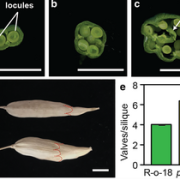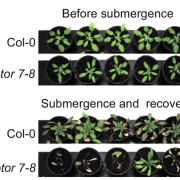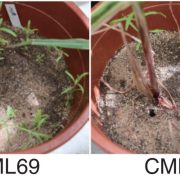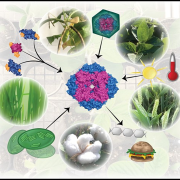
De-extinction of plants from herbarium specimens
Plant Science Research WeeklyMany plants have gone extinct in their natural habitat, but persist as samples preserved in herbaria around the globe. The existance of these samples raises questions about the possibility of using them to "bring back to life" these species, for example, by germinating the seeds or spores available in…

A novel CLAVATA1 mutation causes multilocularity in Brassica rapa
Plant Science Research WeeklyThe CLAVATA1 receptor-like kinase and its ligand CLAVATA3 (CLV3) are associated with the CLAVATA-WUSCHEL pathway, which partly controls locule number (the seed-bearing structure of fruits). An increase in locule number is believed to increase the number of seeds and subsequently increase fruit size.…

TOR couples energy to oxygen sensing to modulate hypoxic gene expression
Plant Science Research WeeklyFloods limit plant oxygen availability, impacting their growth and productivity. In hypoxia, the ERF-VII group of transcription factors are stabilized and activate Hypoxia-Responsive Genes (HRG) that prepare the plant to face the stress. In this situation, plant metabolism switches from oxidative phosphorylation…

Overcoming arsenic stress using iron-oxide doped rice biochar
Plant Science Research WeeklyArsenic (As) contamination in soil influences the physio-chemical properties of plants. Majumdar et al. propose the use of rice biochar (RBC) doped with iron oxide (IO) nanoparticles, an eco-friendly composite, to minimize As toxicity in plants. Rice plants grown on As-contaminated soil with the composite…

Boosting plant disease resistance through epigenetics
Plant Science Research WeeklyIncreasing plant resistance to specific pathogens through genome editing is a very active branch of crop engineering. In a recent paper, Veley et al. propose to edit the epigenome to boost resistance to cassava bacterial blight by increasing the levels of DNA methylation at specific sites, while leaving…

Weeding the witchweed by changing strigolactone biosynthesis in maize
Plant Science Research WeeklyStriga, commonly known as witchweed, compromises the yield of maize (Zea mays) especially in Africa. The seeds of Striga species remain dormant in the soil and are stimulated to germinate by a class of hormones called strigolactones (SL) exuded by the maize roots. Strigolactones are plant hormones with…

Plant Science Research Weekly: January 27, 2023
WWR Full PostRunning a research group in the next generation: Combining sustainable and reproducible research with values-driven leadership
This is a fantastic article to help new, future, and even current lab heads think about their postures, priorities, and practices. It was developed through a workshop held…

Kenya Tanaka: Plant Physiology First Author
Plant Physiology: Author Profiles
Kenya Tanaka, first author of “Dark accumulation of downstream glycolytic intermediates initiates robust photosynthesis in cyanobacteria”
Current Position: Assistant professor
Education: Ph.D. in science, Osaka University, Japan
Non-scientific interests: Anime, Alcohol, Mah-jongg, Baseball
Brief…

Identification of a plant receptor required for cell-to-cell reactive oxygen signaling
The Plant Cell: In a NutshellFichman et al. identify a key player linking reactive oxygen species and calcium signals (but not electric signals) during responses to light stress. https://doi.org/10.1093/plcell/koac241
Yosef Fichman and Ron Mittler
Division of Plant Sciences and Technology, College of Agriculture Food and Natural…

